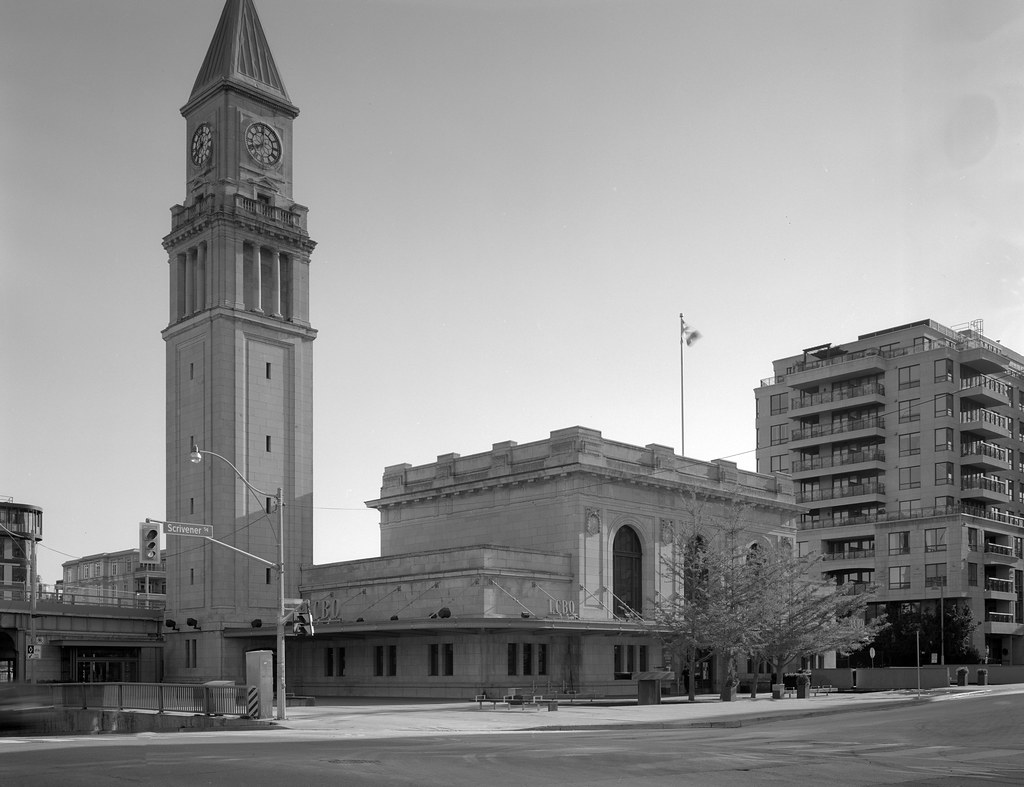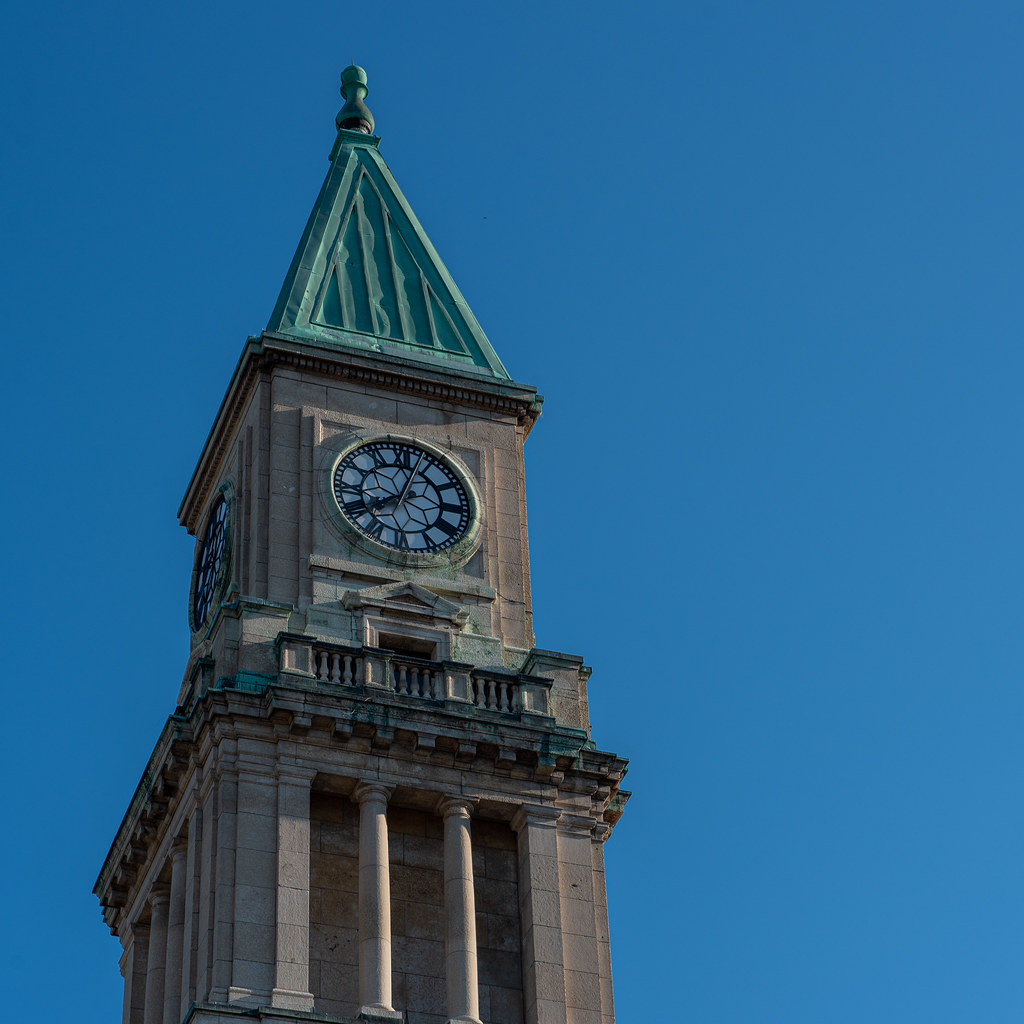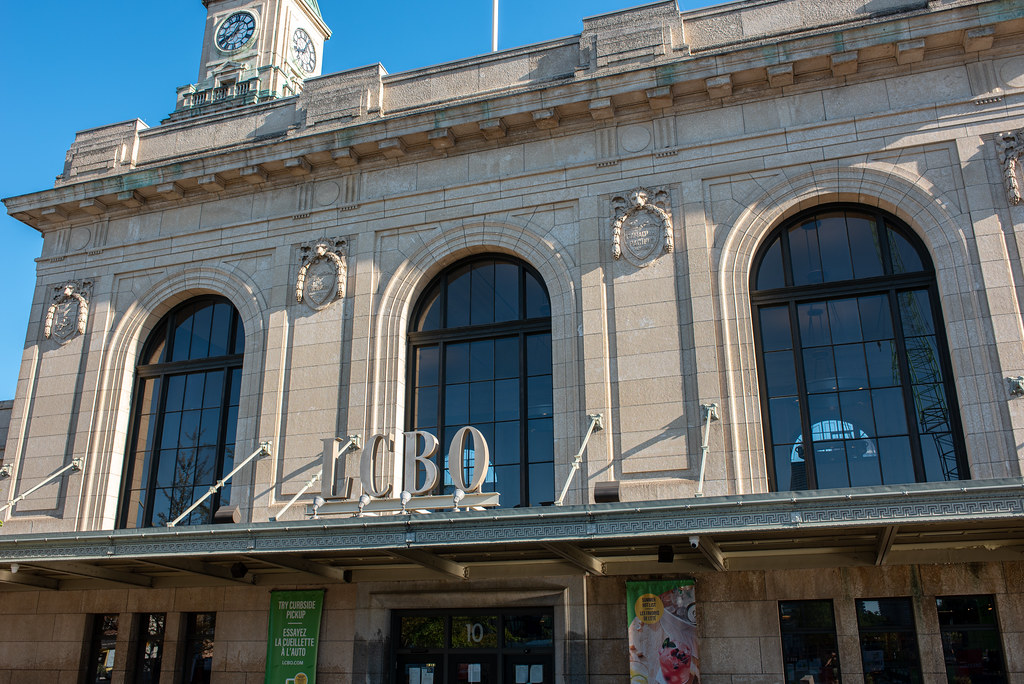If you have ever walked north on Yonge Street, you will probably notice a tall clock tower next to a rail overpass that looks straight out of Italy. While it has spent more time selling alcohol than train tickets, Toronto North remains a station that genuinely shows the grandeur of rail travel during the golden age.

Graflex Crown Graphic – Fuji Fujinon-W 1:5.6/125 – Ilford HP5+ @ ASA-200 – Pyrocat-HD (1+1+100) 9:00 @ 20C
Canadian Pacific gained a foothold into the city of Toronto through two means, on the western approach through the Credit Valley Railway and from the North-East by way of the Ontario & Quebec Railway and the Toronto, Grey & Bruce Railway. Ontario & Quebec was revived in 1881 through re-investment by Canadian Pacific, who used the company to complete a line from Perth to Toronto and then started leasing other lines. Passengers arriving in Toronto from points east needed to cross the city north of the downtown and come in through their western approach, so where their line crossed Yonge Street, they constructed a station. Canadian Pacific retained architect Thomas C. Sorby to design a uniform station with two variations, a single storey and two storeys. The two-storey stations were placed in rural communities to provide living space for their station agent; urban centres received a single-storey station. Known as “Van Horne” stations, they followed a simple general waiting room, baggage room, agent office and ticket window. Canadian Pacific had already decided to run their line above grade, to prevent significant disruption on Yonge Street, so the station sat above grade. The arrival of the Canadian Pacific in Toronto increased the traffic moving through Union Station; the presence of Toronto North gave travellers using Canadian Pacific an alternative.

Nikon D750 – AF-S Nikkor 28-70mm 1:2.8D
Nikon D750 – AF-S Nikkor 28-70mm 1:2.8D
By the turn of the century, traffic in Union Station had become overly frustrating. As Canadian Pacific and Grand Trunk put their heads together in 1906, they still could not decide on a design for a new Union Station. Even after shovels went into the ground in 1914 to start the construction process when World War One halted construction, Canadian Pacific took matters into their own hands. Fearing that the new Union station would not be completed, they began to design a new Toronto North station. Hiring architectural firm Darling & Pearson to develop the new station decided that the Beaux-Arts style would guide the overall design. The key feature would be the clock tower, which took great inspiration from Campanile San Marco in Venice, Italy. The tower would stand out above the area’s other buildings, and the four illuminated clock faces easily made a local landmark. Work began in 1915, with Mayor Tommy Church present to help lay a cornerstone in September, which contained a time capsule. Local construction firm P. Lyall & Sons was hired to complete the work. Despite the war, construction continued, and the new station would be the first in Toronto to feature Tyndale Limestone from Manitoba as a building material. On 4 June 1916, the first train rolled through the station. Canadian Pacific spared no expense in creating a new flagship station for the city, construction costing 750,000$ (~15.3 million dollars in 2021). Passengers entered at street level to a concourse where the ticket windows were located. From there, they entered a grand central waiting room. A couple of storeys in height, the space featured large windows that allowed in plenty of natural light, but electrical lights in brass fixtures hung down from a rich tiled ceiling. The walls were finished in marble with Terrazo tiled floors. From there, the passengers could move up to the platforms at grade to board their trains. Despite the expensive and grandeur of the station, operations were short-lived. With the 1927 opening of the new Union Station and the stock market crash of 1929, Canadian Pacific closed the station to the general public in 1931. Although it would return to service twice, the first time during the 1939 Royal Tour, where the station hosted King George VI and Queen Elizabeth (the Queen Mother) and again in 1945 to welcome Canadian Troops returning home from the Second World War.

Nikon D750 – AF-S Nikkor 28-70mm 1:2.8D
Nikon D750 – AF-S Nikkor 28-70mm 1:2.8D
Canadian Pacific retained ownership of the station and, in 1940, leased the southern area to Brewer’s Retail Outlet. Brewer’s retail was a prototypical form of the modern Beer Store and LCBO store. However, the store occupied only a tiny part of the store, and much of the station’s grandeur was left to decay behind temporary walls and hoarding. In the 1950s, the four clock faces and their inner works were removed, and the tower quickly became home to birds. Like much of the city, the station found itself covered in a fine layer of grime and the town, by the 1970s, began embarking on a great deal of urban renewal, slapping a historical designation on the station in 1975. But as Canadian Pacific began to divest itself of surplus properties in their bid to rid themselves of passenger-related services and properties, they moved to sell the station as part of a forty-million retail and office development. The trouble was that despite having Canadian Pacific written all over the station, it technically belonged to Ontario & Quebec. Canadian Pacific was the majority shareholder but was not the only shareholder. The T. Eaton’s Pension Fund and private investor John Pope held a minority share, and they were not pleased with what Canadian Pacific was doing and promptly took them to court over the matter. The matter took nearly a decade to resolve, reaching the Supreme Court of Canada, which, in 1987, ruled in favour of the Canadian Pacific. The station quickly sold, and restoration efforts were turned over to the Woodcliffe Corporation. After a lengthy community consultation period, Goldsmith Borgal & Co took on restoring and renovating the old station. The first project focused on cleaning up the station’s exterior and the interior of the clock tower. A half-century’s worth of animal waste is a tricky thing. New works, faces, and illumination returned the building to its former glory. Inside new floors embedded with recycled tires reduced vibrations from passing trains.
Important as the tenants remained the Liquor Control Board of Ontario. The building received a few additions, new entrances and flow, and the passenger waiting area was restored and renovated as the main retail space. It took many years to complete, with most work from 2000 to 2003. The result saw a new flagship LCBO Store with 35,000 square feet of retail space. The efforts netted Woodcliffe the Best-Of-The-Best award at the 2003 TCA Achievement Awards. The original time capsule located in 2015 yielded one-hundred-year-old maps, newspapers, the municipal code and coins; a new time capsule has since been installed. While the station has dramatically changed, two tracks remain active past the station, but it still retains much of its glory during operation.